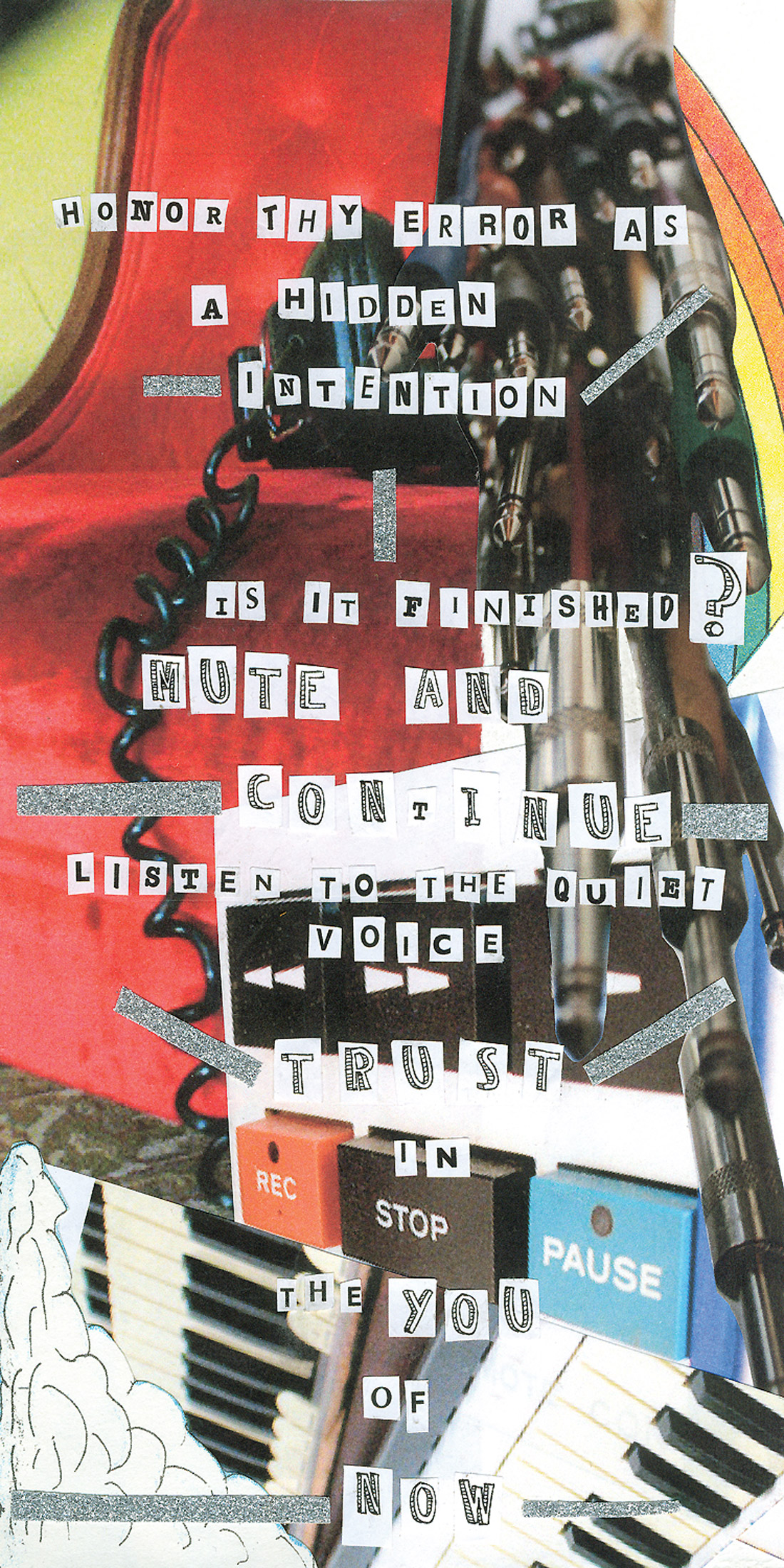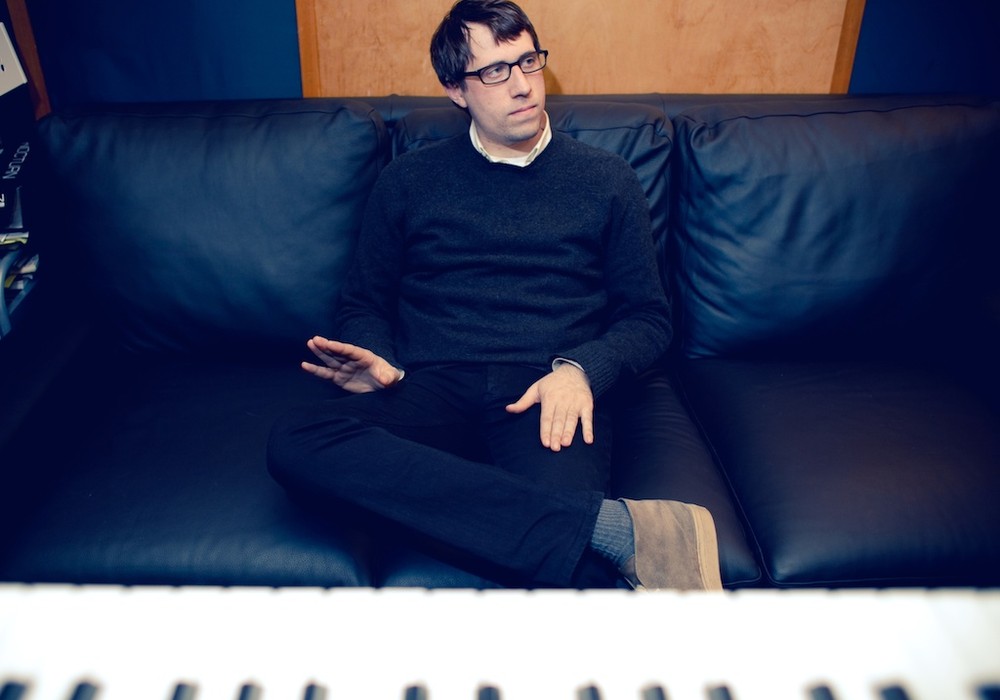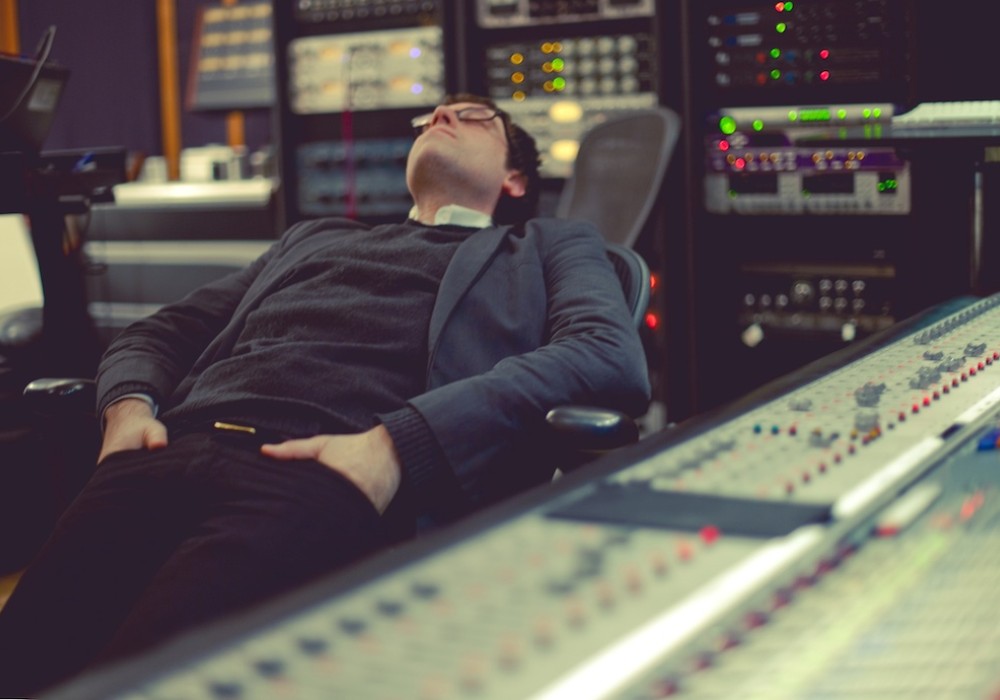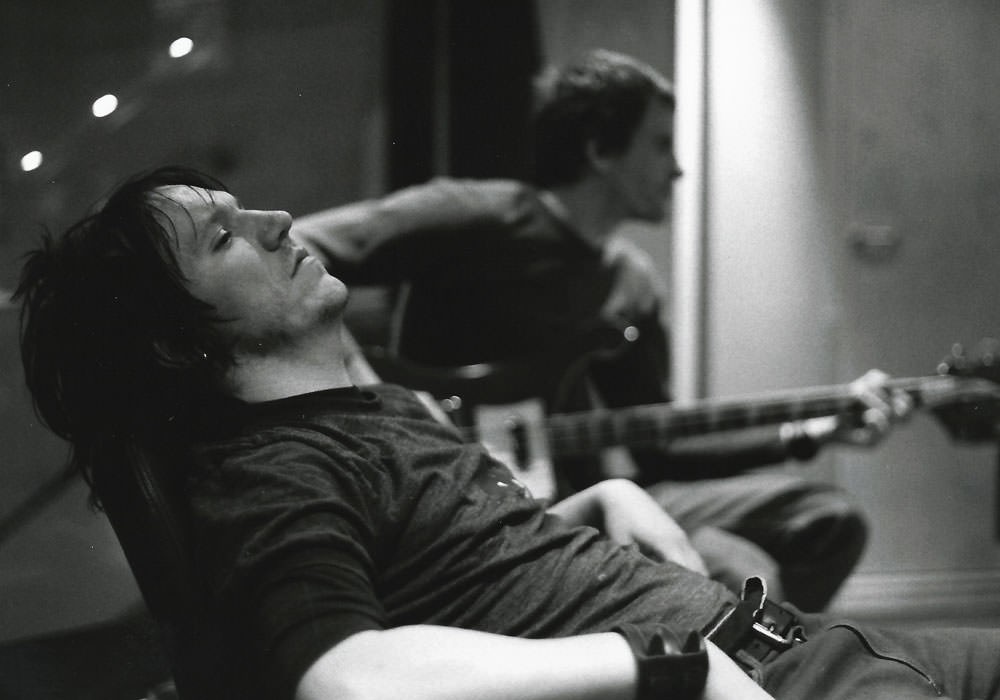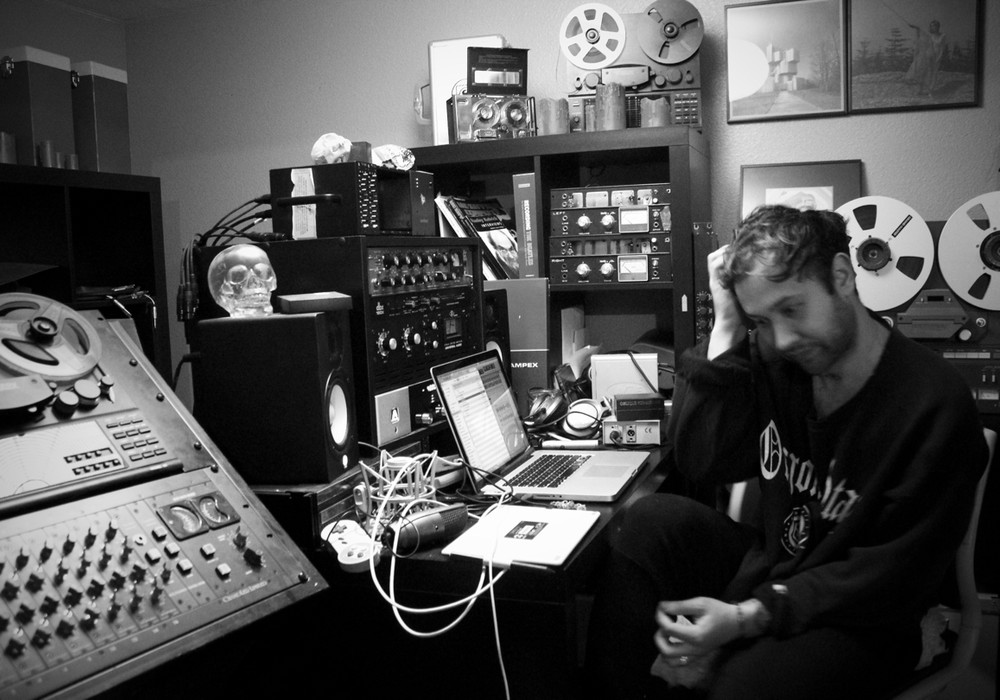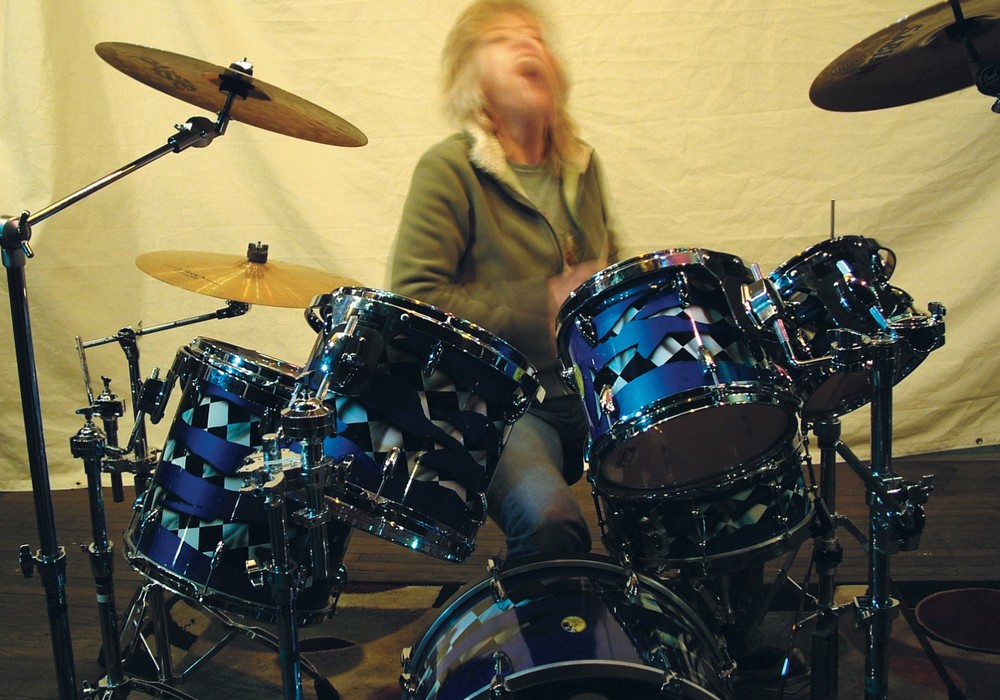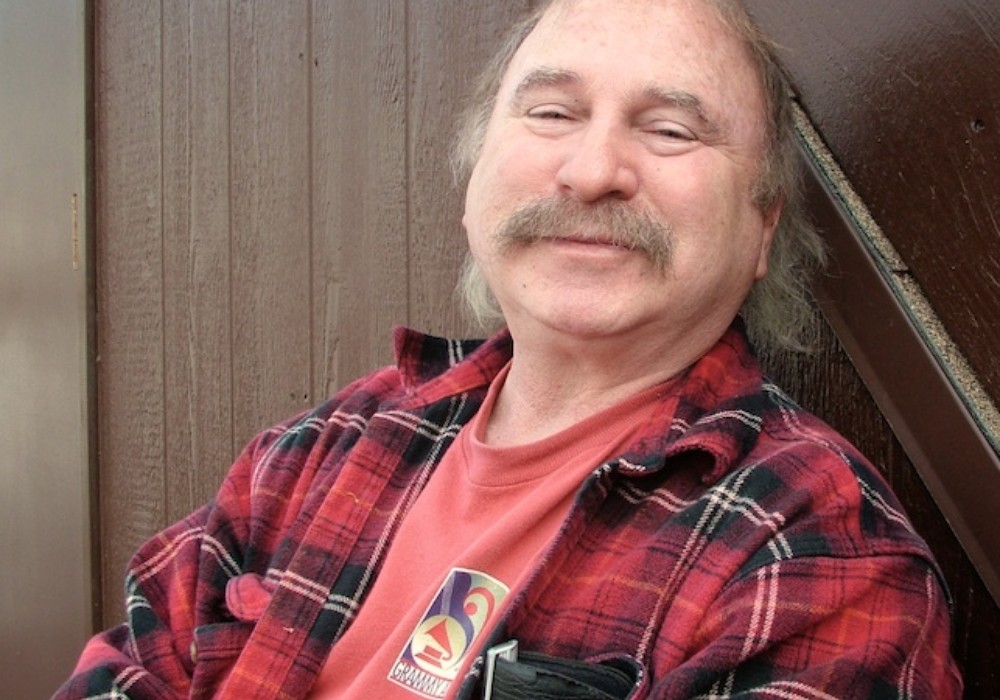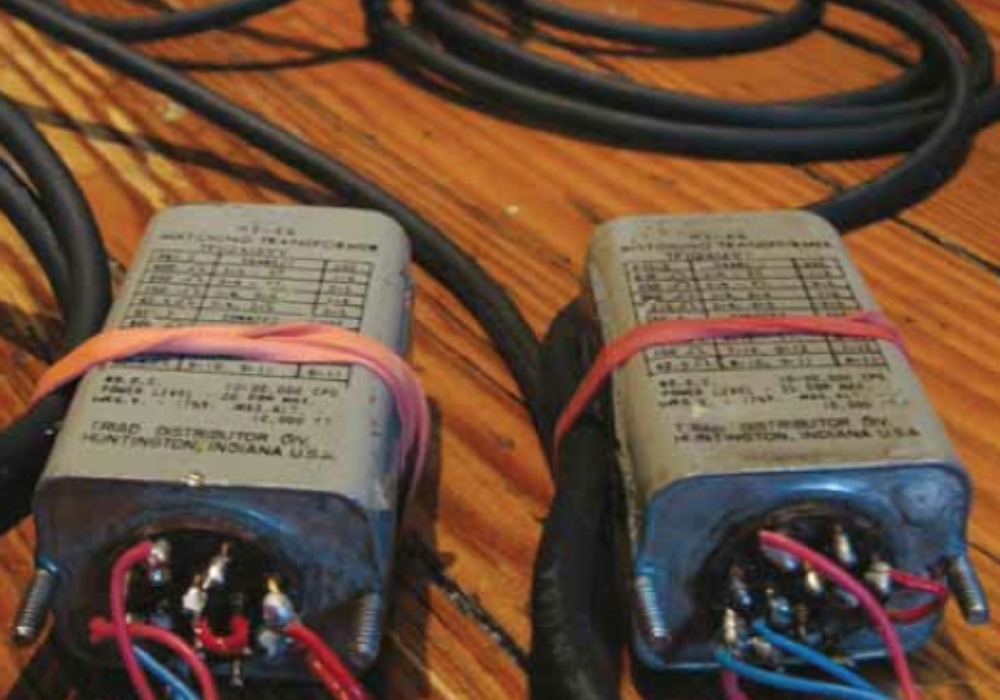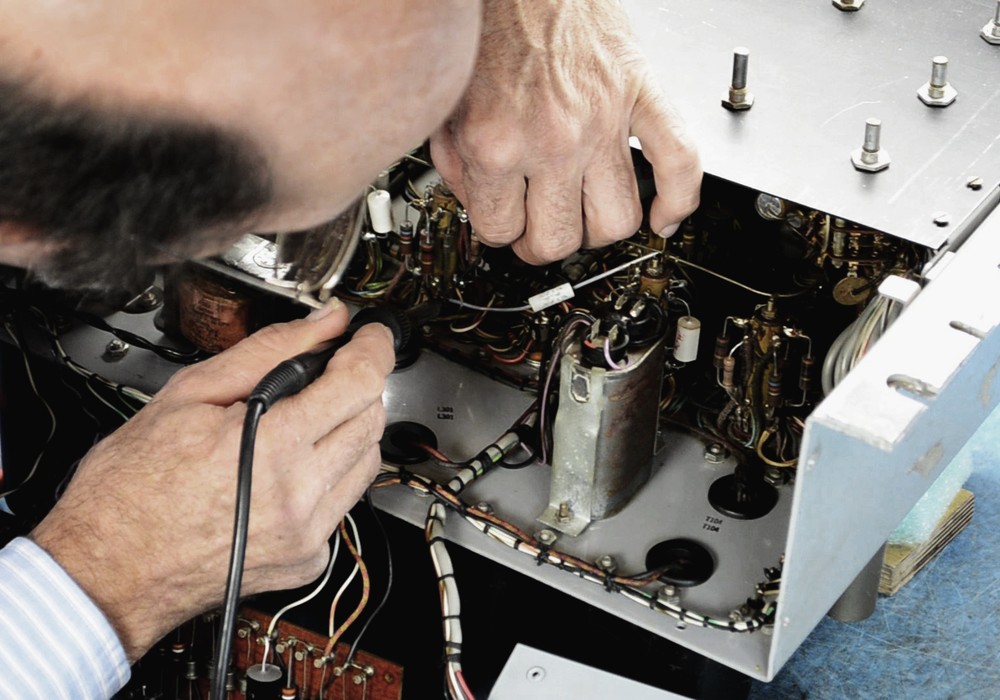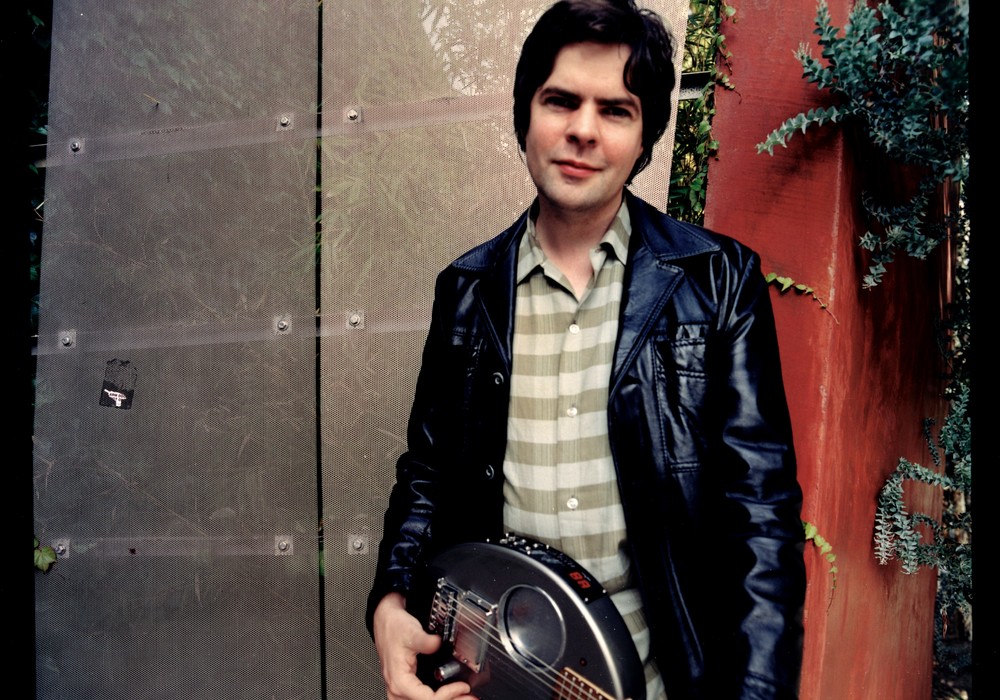Before sitting down to talk with Chris Zane at Gigantic Studios in Chinatown, New York City, he gave me a quick tour of the place. Yes, it is the former Looking Glass Studios founded and built by Philip Glass and yes, it still has Glass's Bösendorfer concert grand piano, but no, Chris Zane has never met the guy. Far from minimalist or post-minimalist, Chris Zane is a relatively young producer, barely in his thirties, whose work often sounds very layered and big. While showing me a song from the then-unreleased Passion Pit debut album (which has since become one of the biggest albums of 2009), he explained that we were listening to no less than eight vocal tracks stacked on top of one another. As the chorus hit, he turned to me and said, "thirty-five." However, his projects are not all shiny synth-pop, as he has worked with a diverse array of artists including Calla, Les Savy Fav, Asobi Seksu, White Rabbits, Ambulance LTD and The Walkmen.
How did you get your start in the recording world?
I didn't even know what an SM57 was until I was 21 years old. I was a drummer my whole life. I went to music school and traveled the country and [was involved in] that whole music conservatory world. When I was about nineteen or twenty, my first year of music school, I called up the head of the school and said, "I'm not gonna come to class tomorrow because I hate this." My first semester's GPA was .10. I ended up washing dishes for a long time. I had a friend convince me to go to Berklee and at the last minute I decided not to go and opted for this much smaller two-year school in Boston — a recording school — and I went there [previously called Mass Comm, now called Art Institute of New England]. I'd say I learned the bulk of everything that I learned in the first semester. I just went fucking crazy and gobbled it all up. After one year of school I got a job at Supersonic, a recording studio in Cambridge [Massachusetts]. It's gone now. It was a real "indie rock heyday" kind of place right by the Middle East [Nightclub]. After about two years in Boston I told my friends I was movin' to New York and convinced a bunch of 'em to come. We moved here in the end of 1999 and I started all over. The second night here [in New York City] I had a friend recording at a smaller studio down the hall. When it was time to leave and I was walking back down the hallway, I heard [makes drum sounds]. I could tell that it was real drums, not a recording. I don't know where I got the balls to do this, 'cause I would never do this now, but I knocked on the door and poked my head in. "What's goin' on in here?" There were some guys in here recording and they owned the studio. It was far different than what you see right now. It had a tiny little Soundcraft [mixing console], and about that much gear [points to a small outboard rack]. A couple of weeks later I had my first band that I was gonna record, and I called these dudes up and said I wanted to do it here. I ended up coming to do a session here. I did more and more stuff here and honestly, I don't know what happened. It somehow just became my place.
Does it work out well that the label [Gigantic Music] is connected to and owns the studio?
The label gets their records made for free and when it's not on the label, the studio gets paid. Everybody's happy. I've been doing a lot more elsewhere this year and last year, but for the most part this is home.
On The Walkmen record [2008's You & Me], there's a very distinctive, bright guitar sound. Talk to me about that guitar.
Um...
Or the whole project, if you'd like.
I'll tell you about the whole project. It's more interesting. I get asked about guitar stuff constantly. People come up to me like, "How'd you do the guitars on Asobi Seksu?" I usually give some variance of a snarky answer like, "I just put a mic in front of the amp and he played." That's really about it! I mic the guitar amp with the same mic every time, a Royer [R-121], and I always try to record out of Fenders — that's it. With The Walkmen, Paul [Maroon] had this Rickenbacker that I'd never even seen before — there's only a couple of 'em, and that's just it. He's very particular about the amp that he has. The long and short of recording his guitar is to turn the amp up far louder than you're comfortable with, turn the tone on his amp far brighter than you're comfortable with and then (as if that's not enough) when you're mixing, keep adding more high end. I keep a short list of bands that I want to work with, and when I moved to New York I think [The Walkmen] were number one on the list. I had emailed their manager about doing Bows + Arrows and she scoffed at me, "Never in a million years." And then suddenly I was in this room, talking about doing the new record and I did it. I guess it was a breakthrough for them. They walked away singing my praises way more than they ever needed to or should have.
It's a great record.
Yeah, it was a really good experience. We did it all live to tape, and those are two things that a lot of indie bands (or any bands) aspire to do — kinds of things that I consider generally dumb, logistically nightmarish, fable-esque stuff — recording to tape, recording live. But it just happens to work for them. When we listened back to the very first song, I remember Alex [Aldi, engineer] looking at me and going, "Holy shit, man. It sounds done. It sounds mixed." I turned around [from the mixing console to face the band, also listening], and they were all, "Holy shit. This is it. Let's go do it." We just started putting songs down. [You & Me] has a real vibe to it. It's something that I've realized in the last year and a half, that I think the actual key to making a good record besides songwriting is having a consistent core that runs through the whole thing. You don't have to skip [songs] because it all has that same thing.
I've heard it called the "totalizing agent".
I like that. Yeah, it's something that I consciously made a point of implementing last year. The first day that the Harlem Shakes came in, we sat down and I made them listen to [Michael Jackson's] Thriller from front to back. We talked about Thriller all night. We didn't even set up an instrument. There's something about [Thriller] that runs all the way through. It's like a core, a set of guidelines or of rules. If I said, "Cook whatever you want, but you have to use apples and you have to use peanut butter," there would be a common thread through your whole meal. I've been focusing on that a lot more, and a lot less on where the bass knob is at on the guitar amp. So I think that's part of what tied The Walkmen record together — if you're in the mood to listen to it you listen to the whole thing, and then when it's done if you're still in the mood you'll listen to it again.
One thing about that record is that it seems to have less mids than a lot of records.
I'm sure that I destroyed something between 1 and 2.5 kHz on every channel because they're just such a harsh band to listen to, and I probably piled on 50 Hertz, and piled on something on top [of the frequency spectrum]. A lot of times I say, "50 Hertz" and people are like, "What?"
Do you think that's from being a drummer?
I think it's a combination of that and that there's this whole other side of me that just lives and breathes dance music. And when you're making that kind of a record you've just gotta move the bottom. I just recently started getting more into SSL [consoles], and specifically they have the E-series EQ. It was the one, the sound of hit records [in the 1980s]. A lot of times I think a good place to start is to take a famous EQ [module] and look at what the frequency bandwidths written out are, because they have 'em there for a reason. At some point in their head they thought somebody should know about it. 50 Hertz is staring at me, and I start crankin' on 50 Hertz on an SSL and [think], "Wow, that sounds fucking awesome." Ever since then I've added 50 Hertz to everything.
You mentioned live tracking. [Asobi Seksu's 2006 album] Citrus opens with an instrumental introduction called "Everything Is On". That leads me to ask whether a lot of that album was tracked live and what was on?
Definitely not tracked live — constructed in the studio one at a time, 40 guitars per song, which I love. "Everything Is On" I think was just some bullshit that James [Hanna] and Yuki [Chikudate] had made in the space. They would do stuff that is all over Citrus, and a little bit on the new album [2009's Hush], where they would take a record player or an old tape deck and put on, say, Brahms, and run it through delay pedals and reverbs and record it. Then we would manipulate it in the studio, time stretch it, layer it, edit it, add more and run more records through. On the new album we set up a whole thing with records and multiple space echoes and all kinds of crazy shit — basically throwing tons of stuff down on the canvas with the idea of picking up two or three cool ones.
A lot of experimenting in the studio.
Yeah. I think ["Everything Is On"] was probably done at the last minute as a, "Let's have the record start with this thing." But throughout the album in and out of the songs, there's Debussy stuff that fades in and out of Echoplexes. There's a lot of classical, really romantic stuff.
The song "Gliss" [on 2009's Hush] — is that a mix of live drums and drum machines?
Yeah, that's right. "Gliss" is this sound that I don't have words for, but I use it often, and it's this sound I hear in my head that's this hybrid of half-drums, half-sequencing. Even some of the live drums are samples and they're played so that you get this really herky-jerky feeling of, "It sounds like live drums, but it doesn't feel like it." It's really straight, there's no release, there's no decay. It's all choppy and all over the place. When you layer up a bunch of that, you get this really cool thing that's half and half, and so a song like that was all built up sittin' right here [at the computer]. It's something that I like to do. I did it with them and it's all over the Passion Pit record [Manners]. There are tons of moments on the Passion Pit record where you're boppin' along, thinking that it's a real drummer playing and all of a sudden, the pitch drops two octaves and it stops and you think, "Wait, what is that?" Then it starts back up and there's programming in there. You're thinking, "Is it real? Is it fake?" I like mixing sequencers with the live drums together a lot, and I like mixing the live drums that are close with the live drums that are ambient. You're getting spatial changes every second. Close! Far! Right! Left! Dry! Programmed! Live! It's a big mishmash and when you get it all together pumping in the right way, you get some really cool stuff. "Gliss" is a cool example of that. I'm really deep into drums. I piss a lot of engineers and mixers and bands off about it. I just physically can't proceed until I feel like it's happening for me. If the snare drum's not right, I'm not ready to move on. It's a big deal.
Do you have any particular preamps or mics that you swear by for recording drums?
Well, these Neve 1095 [preamps], which are rare. They came from South Africa from a console. The words on there are pretty weird. It says, "effen" and "mik". Everybody tells me, "These are the crown jewels of drum recording." They're usually what I use, and I think they sound really good, but to be honest I'll use anything. That's where I am at this point. When I'm here [in Gigantic Studios] there are definitely certain microphones and stuff that I like, but lately I like to just show up, go into a studio in Berlin and ask, "What do you guys use?" Either I'll say, "Cool," or I'll say, "Eh, it doesn't sound so good. Let's try switching it." I try not to overthink it too much. If you want a specific example, a little Zane "secret weapon" — AKG made these microphones called C 28s. They're these vintage little tube mics that look like [Shure SM]81s or something — long and silver. At first glance they appear to be typical small condensers, but they're actually the same capsules as the [AKG] C12s, plus they're in this weird, fixed, half-cardioid/half-omni pattern — it's bigger than a wide cardioid.
You use it as a room mic?
Overheads are usually what I use them for, although we wound up using one for the Passion Pit vocals. By the way, besides the stacking that I showed you before, some of the sounds that sound like synths we actually created by having Michael [Angelakos] sing long notes and we'd manipulate them, pitching them up, stretching them out — totally a Kanye [West] thing. Anyway, I'd always talked about trying vocals on [a C 28], but never had. We set it up to hear against a C 12, but didn't get around to it. After two songs of singing we realized we had been on the C 28 the whole time and that it sounded pretty awesome. It was super smooth, although a bit dark, but I figured it would open up nicely in the mix — classic, "happy accident" stuff.
You worked with the group Calla. Do you have a way that you prefer to record breathy vocals?
Again, just put the dude in front of a good mic and a good preamp and try not to EQ it too much and it will probably sound good. Interestingly enough with Calla, I remember we started doing the vocals on the same vocal mic that I use for everything, which is this really great vintage C 12 that I use on about 95% of all vocals. Sometimes I'll try a [AKG] C 414, or a couple of vintage Neumanns. I had just bought two Rode NT2s — for $399 I dare you to show me a better and more versatile, awesome mic. [Aurello Valle, of Calla] sang into that, and said, "This is it. We gotta do 'em all with this." He sang super fucking quiet and I probably rolled off a bunch of low, rumbly stuff, and we probably double tracked it. We did a lot of doubling or tripling with an amp and blending some of that in there.
You've had the opportunity to work with a couple of bands on their debut LPs where they've followed up very well-received, self-produced EPs. How do you approach that?
I try my best to ignore it. Maybe I try to take what I think is good about it and polish it up, present it in a better way — give people more of what they like. Then I probably have a freak-out — from when we finish the record until when it's released — that no one's gonna like it. Passion Pit's a perfect example of that. People like that EP [2008's Chunk of Change] so much, (and I know it doesn't matter, especially to people that don't think like us) but it sounds like shit. It was recorded in Ableton [Live], it's not mixed, not mastered, it's distorted, there's no [stereo] image. It doesn't sound good. But it kind of doesn't matter! It's awesome, people like it and there's definitely something to it.
With so much home recording is there a place for that rawness, where someone would take a rough mix over a polished, big mix?
There is, no doubt — but there are definitely degrees of it. In my opinion, that shit is too rough. If you really want stuff to go to the next level — and I'm not even talkin' about major label A & R — I'm just talkin' about the objective, literal truth of the matter. If you put that shit on the radio or MTV, it is not going to sound good enough, period. So unless you're on some No Age shit (and that is not only a decision you've made, but also the decision you've made and it's the point of the whole thing) then I think there is a way to make stuff sound better and still retain those pokes, points, edges and ruffles that make it unique. The Passion Pit record [2009's Manners] sounds huge and glossy and blown out completely. The drums are still fucking distorted, it's got some hair on it and it sounds cool. Sonically I try to be conscious of it, but I definitely don't cater to it. At the end of the day, it's the band's record. "You're on the album cover. You have to live with this for the rest of your life. I'm gonna insert my own bullshit, but if push comes to shove, I'll let you push me because it's your album." If a band like Passion Pit comes in and says, "Fuck the EP. Let's do this," I'm gonna say, "Yeah." With Tokyo Police Club, they were under so much pressure for that record [2008's Elephant Shell]. I only did one song on it ["Your English Is Good"].
The rest was at Tarquin Studios, is that right?
They did the whole record with Peter [Katis at Tarquin Studios] and then I think they ended up re-tracking all of it in Toronto with the guy [Jon Drew at Chemical Sound Recording Studio] who recorded the EP [2006's A Lesson In Crime], because of exactly what we're talking about. Then they went back to Peter and mixed it, so it kind of got the best of both worlds. We did ["Your English Is Good"] in one day — came in at noon, set up, recorded the entire song and went home. The next morning they played David Letterman, I mixed the song, they came here from Letterman, listened to the mix, we watched Letterman and we went home. It was really quick and fast and we didn't over think it. With Passion Pit, that's one of my tasks — to separate them a little bit from the impending wave of hype and pressure and all that shit that's knockin' on their door. I try to shoulder it for three months, until we get out of here. I try not to think too much about that stuff. It's hard.
So then with Harlem Shakes, was the process relatively similar for the EP and the album?
No. The EP is just what it is. It's cool — it's a band a little bit still in the post-Strokes world. It's catchy. After we had that Thriller night, paying attention to a core became vibrant. Those kids are much smarter than me.
I think the LP [2009's Technicolor Health] is even better than Burning Birthdays.
So do I, by a lot. There was a concept — we sat down, we talked about it and we said, "We're going to make a big, bold, dense, smart '90s record — a record that mixes the real with the fake, organic with electronic." We decided all of these fundamental elements and then we just stuck to them every day. A huge side of [Technicolor Health] was the production. I've been lucky in that a lot of the projects I've done lately have been that way — production is a big part of it. But then I'll go off to Berlin and I'll do a record with The Rakes where it's the opposite, where it's anti-production — drums, bass, guitar, piano, vocals — done dry. No reverb, no overdubs — performances and songwriting. That's what that record [2009's Klang] was about. But the Harlem Shakes, Passion Pit, Shy Child — these records are meant to say, "Here's how we're presenting these songs to you."
How do you like to deal with samples and sequencing?
I tooled around with Ableton Live a little bit a long time ago and was so confused by it. But the drummer from Passion Pit, Nate [Donmoyer], has his own thing going on. He's a DJ/producer, signed to Ninja Tune [as Shuttle]. He does everything in Ableton. It's a really interesting program and I couldn't imagine not using it now. I learned how to use Ableton with a lot of help from Nate. Most programs are timeline-based, and Ableton has that, but it also has what I call a "tabletop work area", where you can create and mold sounds. Once you have what you want you can decide what to do with it, paste it in the timeline, play it or trigger it. I'll go into Ableton and pull up about twenty drum samples, knowing that I'm only gonna use ten, and I'll start quickly programming and ditching samples I don't like — we'll work off of that for the whole project. We'll have two outputs in Pro Tools for Ableton ReWire. When it gets time to mix we'll bounce the Ableton work in as its own tracks.
Now that the Passion Pit album is done, your next project is with Shy Child. Talk to me about that.
I've known Nate [Smith] and Pete [Cafarella] for a while. I did their two records before this. We recorded the first record in a bedroom on a laptop. Our entire budget was spent on ordering pizza, and it sounds awesome! On the second record we decided we were gonna go full out and go crazy and make a huge dance record, and I think we got a little carried away and lost the plot. But this one has [the idea of], "Let's get a core, a concept, an idea and let's establish elements and stick to those." It's about songs. I think on their previous records the vocals have been an afterthought. This time around I've said to Pete, "You've gotta write songs around the vocals first." I want it to cause the same kind of reaction as the Harlem Shakes album, where it seems like they dropped off the radar for a little while and then they come back with this fuckin' monster of an album. Leave people thinking, "I wanted to dislike it, but I love it!" That's the same thing I wanna do with Shy Child right now. I want them to show back up on the scene and all their ex-girlfriends will be like, "Fuck, the record's awesome."
